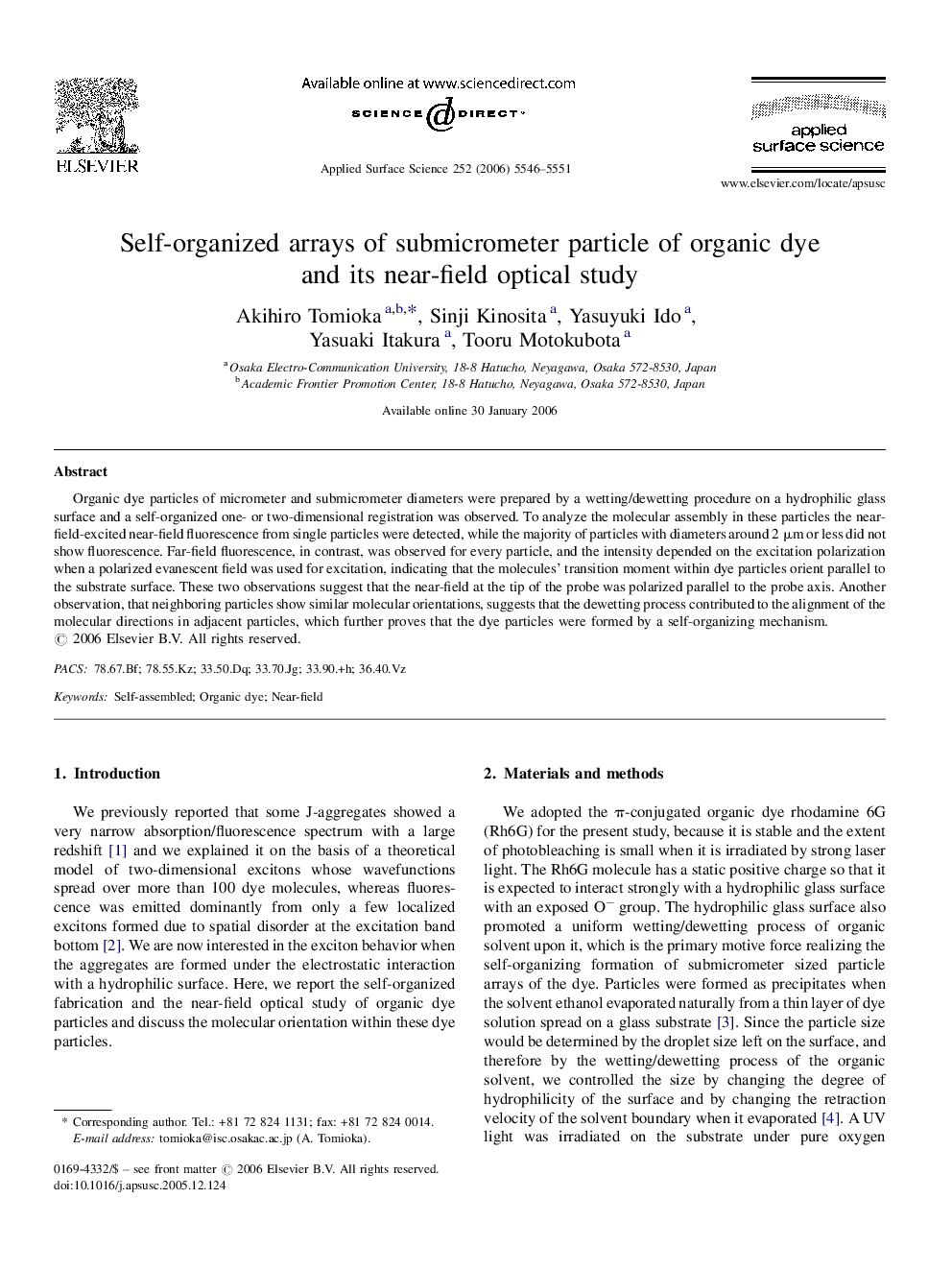| Article ID | Journal | Published Year | Pages | File Type |
|---|---|---|---|---|
| 5366356 | Applied Surface Science | 2006 | 6 Pages |
Organic dye particles of micrometer and submicrometer diameters were prepared by a wetting/dewetting procedure on a hydrophilic glass surface and a self-organized one- or two-dimensional registration was observed. To analyze the molecular assembly in these particles the near-field-excited near-field fluorescence from single particles were detected, while the majority of particles with diameters around 2 μm or less did not show fluorescence. Far-field fluorescence, in contrast, was observed for every particle, and the intensity depended on the excitation polarization when a polarized evanescent field was used for excitation, indicating that the molecules' transition moment within dye particles orient parallel to the substrate surface. These two observations suggest that the near-field at the tip of the probe was polarized parallel to the probe axis. Another observation, that neighboring particles show similar molecular orientations, suggests that the dewetting process contributed to the alignment of the molecular directions in adjacent particles, which further proves that the dye particles were formed by a self-organizing mechanism.
